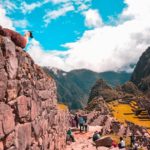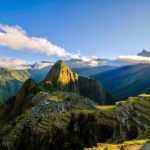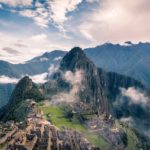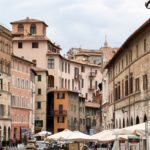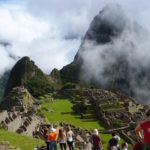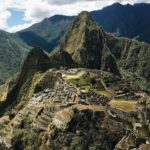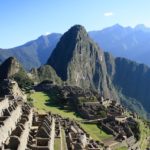Discovering Machu Picchu: In the Footsteps of Hiram Bingham
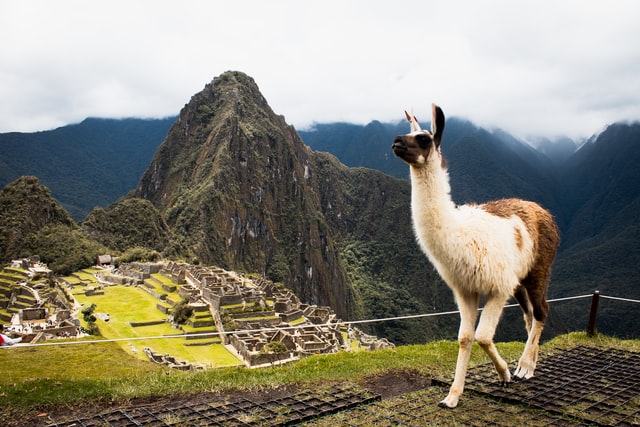
Machu Picchu. To me, the name carries mystery and adventure. The city of the Incas. An ancient center built among the clouds, unconquered by the marauding Spanish. Although Machu Picchu has attracted scores of visitors, I wanted to experience what it felt like when Hiram Bingham came upon the sight in 1911. I hoped to rediscover the intoxication of exploring the lost city in the clouds.
A Lost City Is Found
Along the twisting turns of the stone paved portion of the Inca trail the anticipation grows tenfold with every step up. The foliage remains thick above us, giving our path the look of green carpet. Any hint of a grand citadel is hidden among the curtains of early morning mist sweeping in from all sides.
As the 82-kilometer (51-mile) route continues up towards Machu Picchu, views of Inca ruins appear out of the haze. Slowly, my dream of entering a long forgotten kingdom where time had lost its way appeared to be coming true. Long rows of terraces below hint at coming attractions.
On the same trail that Bingham discovered a century ago, I find that Machu Picchu is more than an isolated citadel hidden among mountain peaks. It is part of a network in a carefully planned empire whose geographic knowledge allowed for a spectacular foundation.
An Architectural Wonder
Then, as I arrived at the “Sun Gate,” it happened. There it lay in its intricate expanse: terraces, temples, and living quarters encircled with a backdrop of majestic jade slopes. Architecturally sublime, Machu Picchu seemed to meld into its natural landscape and yet clearly revealed its man-made aesthetics.
The herd of fellow tourists seemed miniscule as I gazed down upon the enigmatic view below me. As I made my way down the terrace steps towards the main plaza, I wondered at the precise planning that had been undertaken by the Incas: every building and supporting wall was constructed out of massive stone blocks fitted into perfect geometric pieces with each other without the use of mortar. This was mathematical care that blossomed into creative inspiration at every turn. Modernity could not shake the staggering brilliance of Machu Picchu’s ancient architecture.
Building in Harmony
As I continued to explore every inch of the city, I went from admiring the beauty of its nuts and bolts design to appreciating how powerfully Machu Picchu was integrated into its natural surroundings. Hidden away for centuries by mist and overgrowth, this Incan stronghold must have exuded an otherworldly aura when Bingham set eyes on it. Now, devoid of clambering vines and sycophantic vegetation, Machu Picchu retains its mystical attributes although in a quieter manner.
Every foundation created by the Incas at Machu Picchu was supposed to represent in rock form the ephemeral spiritual beliefs they held in high regard. Temples align with the constellations above, hitching posts declare the turning of the celestial bodies, and every aperture is a guide to spirits unseen. As I peer through the peculiar “Three Windows,” a trio of trapezoidal openings representing heaven, earth, and the underworld, I mull over how at Machu Picchu science, art, and faith come together to produce a truly spectacular habitation.
Discovering Machu Picchu: In the Footsteps of Hiram Bingham.
Discovering Machu Picchu
It is difficult for me to digest this vast complex hunkered amid the stone walls and narrow walkways of the municipality. So I find myself a quiet corner inside one of the guard houses perched high above the terraces. Here I command a magnificent view of this ancient Inca bastion that lets me dwell on the grandeur of the lush Andean peaks around me and the epic scale of Machu Picchu’s hand chiseled architecture.
The splendor of the city is captured in the graceful curves of the farming terraces, the bold symmetry of the nobility’s sloping roofs, and the loneliness of this floating municipality in the clouds. As the sun lowers over the stone citadel, I find I have spent all day enjoying the “City in the Clouds.” I have seen Machu Picchu in all its beguiling charm: a manufactured kingdom in perfect harmony with the heavens and the earth.
My discovery of Machu Picchu has been more cerebral than Hiram Bingham’s, but I can still feel the same heady exhilaration as I watch over this impressive city. A century later, Machu Picchu has captured my adventurous spirit the same way it ensnared Bingham.
Photo for Discovering Machu Picchu: In the Footsteps of Hiram Bingham by Unsplash.

